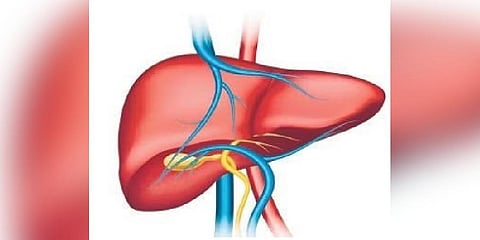

Myth: Men are at higher risk of liver cirrhosis
Fact: The recent large study results from the Global Burden of Disease Study 2019 revealed that the age-standardized incidence rate (ASIR), age-standardized prevalence rate (ASPR) were higher in males than females. But to claim that males are at higher risk of cirrhosis than women is not entirely true, because one has to also weigh in on the cause for cirrhosis. For example, some liver diseases are more prevalent among women and hence they are at higher risk of cirrhosis from those liver diseases than men. On the contrary, in patients with primary biliary cholangitis related cirrhosis, male sex is associated with a higher risk of both all-causes death and liver-related death compared to women. Hence there are more males with cirrhosis than females, but the risk for cirrhosis in males vs females depend on the cause of cirrhosis and additional environmental, lifestyle and genetic factors.
Myth. No alcohol, no liver cirrhosis
Fact: Alcohol is arguably one of the commonest causes for cirrhosis in the world. But that does not mean alcohol is the only cause for cirrhosis. A large proportion of cirrhosis patients do not consume alcohol. They have other non-alcohol-related causes for cirrhosis including metabolic-syndrome related fatty liver disease (seen in persons with diabetes, obesity or hypothyroidism), chronic viral hepatitis (such as Hepatitis B and C and D along with B), autoimmune hepatitis, and genetic causes. In obese persons or those with diabetes, even low to modest amounts of alcohol use can result in development of cirrhosis.
Myth. Liver cirrhosis affects older people
Fact: Liver cirrhosis can be diagnosed at every age from neonatal period (under 28 days of age) to elderly population, depending on the cause for cirrhosis. Many are the reasons for cirrhosis development in older people - these include chronic viral hepatitis infection, alcohol use and non-alcoholic fatty liver disease. Among the neonates, rare genetic and congenital disorders promote rapid progression to chronic liver disease and liver failure.
Myth: Only people who are overweight or obese will be affected by fatty liver
Fact: People who are overweight or obese are at risk of developing fatty liver. There are multiple other causes for fatty liver, of which the most common is alcohol consumption. Significant alcohol use causes fatty liver in approximately 90% of consumers which reverses in 2 weeks time with abstinence. Other causes for fatty liver disease include - diabetes, hypothyroidism, presence of high blood pressure and high lipids, an increase in waist:hip ratio and well as use of certain medications.
Myth: A liver transplant is the only option available for treating liver cirrhosis
Fact: A liver transplant is the only option available for treating liver cirrhosis when advanced liver failure sets in. Cirrhosis has 6 stages to it. In stage 6, the patient becomes critically ill with multiple organ failure. In patients who are in advanced stages of cirrhosis - such as 4 and above, if a specific liver disease severity score called MELD score (model for end-stage liver disease) is above 18, then liver transplantation should be considered since it is curative. Some centers would advise liver transplant listing and early transplant above MELD score 15, to prevent advanced complications and reduction in benefits with transplant in critical stages. In stages 1-3 and to some extent 4, medical management would only suffice and most complications can be kept under control and cirrhosis stage maintained for many years within a stable stage.
Myth: A person is safe from cirrhosis if is no symptoms
Fact: A person is relatively safe in early stages of cirrhosis and stages of cirrhosis without active complications. However, in the presence of uncontrolled causes for the cirrhosis - such as continued alcohol use, persistence of obesity, untreated chronic viral hepatitis and uncontrolled diabetes, the stages of cirrhosis progress and symptoms come in. But it is also important to know that there are some complications of cirrhosis that can occur even without any symptoms - this is particularly true for liver cancer. This is why doctors put cirrhosis patients under continued medical surveillance and check for liver cancer development every 3-6 months using a panel of blood tests and imaging.
(Dr Cyriac Abby Philips, Senior consultant, specialist in hepatology and liver transplant medicine, Rajagiri Hospital, Kochi)